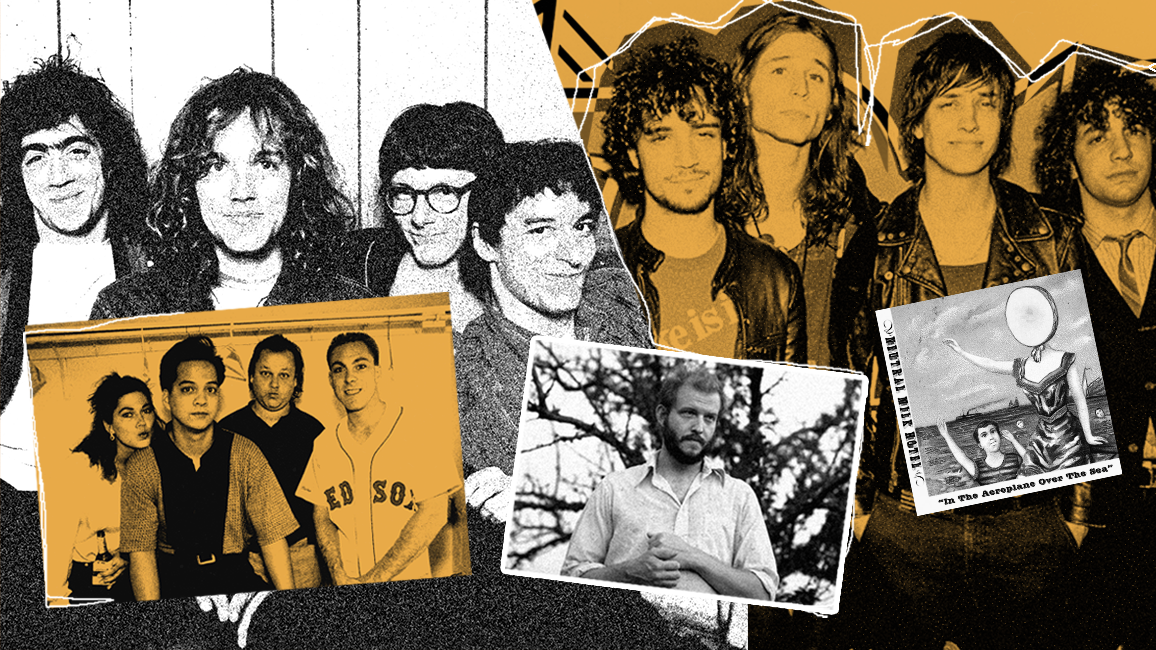The journey of indie in the US is a fascinating story. While it had its roots in the country's fertile underground punk scene, it was really popularised by the highly influential college rock radio stations of the 1980s, before merging and blurring with the alternative-rock boom of the 1990s and going on to produce some of the biggest stadium guitar bands of all time.
As all behemothic musical movements do, US indie spawned any number of sub-genres all of its own. So how, exactly, are you meant to define the growth of a genre that could reasonably include the gruff, angry hardcore punk of Husker Du, noise freakouts from Sonic Youth, the lo-fi acoustic folk of Elliott Smith or Daniel Johnston, the angular, slacker rock of Pavement, the pure blues of The White Stripes, or the introspective grandeur of The National into such tight parameters? It's a tough job, for sure, but we think we've cracked it. Below, the albums that define US indie's story so far.

R.E.M. - Murmur (1983)
Pinpointing the album that defines the birth of US indie isn’t easy. The Replacements' Let It Be would have been a worthy contender for this spot, or Double Nickels On The Dime by Minutemen. But considered objectively, R.E.M.’s debut album outstripped those competitors by every measure. The Athens, Georgia band went on to become one of the biggest guitar bands of all time, but way before they did, they offered the entire US underground scene a blueprint for a new pathway to success. The much-referenced “R.E.M. model” meant to reject major labels, eschew traditional music industry means, stay resolute to your own ethics and beliefs and yet still find a way to be hugely successful.
Murmur couldn’t be a more perfect set of songs to help achieve such a mission statement, be it Pilgrimage's post-punk leanings, the beautiful A Perfect Circle, the jangly-Byrds worship of Talk About The Passion or the massive guitar pop of opening track Radio Free Europe. The success of the likes of The Gin Blossoms and They Might Be Giants in the intervening years couldn’t have happened without it.
Pixies – Surfer Rosa (1988)
With Dinosaur Jr., Husker Du, Sonic Youth and countless others, US indie began to morph from its roots as a sensitive, melodic strand of underground punk rock into the alt-rock behemoth that would go on to define the 90s. In terms of cultural impact, surely the legacy of Pixies trumps them all.
Famously the band from which Nirvana borrowed some of their signature sounds, it's not overstating things to call the Boston band one of the most influential artists of all time. Their debut album, Surfer Rosa was a concise bridge between the abrasive noise of the DIY world, the jangly oddities of college rock and the path toward genuine crossover success. And it's just a killer record, too – Gigantic, Cactus, Bone Machine are all star turns in a back catalogue littered with anthems. Admittedly, the band topped their debut with the release of Doolittle a year later, but the inclusion of the anthemic Where is My Mind? and the shadow it casts over every quiet-loud-quiet band that came in its wake make it fully deserving of its place here.
Neutral Milk Hotel – In the Aeroplane Over the Sea (1998)
Were it not for the unusual and cultish rebirth that In The Aeroplane Over The Sea received in the years following Neutral Milk Hotel’s split, chances are it wouldn’t have got anywhere near this list and you’d be reading about Pavement or The Flaming Lips instead.
Back in 1998, this was not a record that was critically lauded. But it wasn’t despised, either. Its fate was actually worse than either of those things – it was ignored. But, much like its hardcore punk counterpart The Shape Of Punk To Come by Refused (also released that year), In The Aeroplane... has gone on to have a life of its own thanks to a hardcore online fanbase. Frontman Jeff Magnum’s bizarre lyrics of devotional religious imagery, childhood memories and sexual awakenings are paired with his band's lo-fi folk and psychedelic brass and woodwind, and were unique at the time. Without its influence, the Americana-folk of Bright Eyes, Vampire Weekend, Arcade Fire and more would surely have sounded very different.
The Strokes – Is This It (2001)
Pop-punk, nu metal and middle-of-the-road acoustic singer-songwriters were in complete control of the musical zeitgeist as the new Millennium got underway. With the Britpop boom having become a parody of itself and Radiohead’s Kid A making traditional indie look tired by comparison, there was a real concern that indie on both sides of the Atlantic might have had its day.
All it took was five scruffy lads from New York playing Television-inspired, wiry art-punk to turn that idea on its head. The Strokes seemingly appeared from nowhere, and they were already being touted as the modern saviours of rock'n'roll before Is This It, their debut album, was even released. The fact that it lived up to the impossible hype, with songs like The Modern Age, Last Nite, New York City Cops and Take It Or Leave It, was one hell of a triumph.
Still sounding as effortlessly cool now as they did in 2001, The Strokes made way for a whole new group of bands – from The White Stripes to Black Rebel Motorcycle club to Interpol – that turned US indie back into a commercial juggernaut and a phenomenon all of its own.
Bon Iver – 22, A Million (2016)
Justin Vernon’s Bon Iver project had been on a four-year hiatus prior to the release of his third ful-length album. Having been a hot name to drop when his 2007 debut Forever Emma, Forever Ago made waves among indie tastemakers, he brought in a full band and achieved an impressive level of mainstream success with its self-titled follow up in 2011. So it’s fair to say that expectations were high when 22, A Million arrived, but no one could have predicted quite how far from his rootsy, chamber-folk he would travel with the record.
After years and years of indie sounding lo-fi and sparse by design, Vernon collaborated with a cast that included producer BJ Burton – most well-known for his production work with the likes of James Blake, Low, Miley Cyrus, Lizzo and Charli XCX – and made an album that took his core sound and supersized it with references to Radiohead’s Kid A and Kanye West’s My Beautiful Dark Twisted Fantasy. Many didn’t want nor understand its broken beat-filled folktronica and loathed it. But just as many critics lauded it, and, with hindsight, it’s easy to see just how influential 22, A Million proved to be. It provided a pathway to new territories for what indie could be and where it could go.

